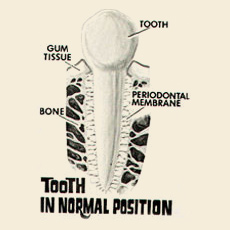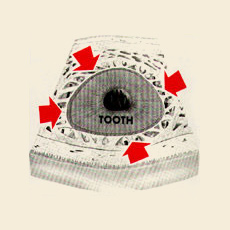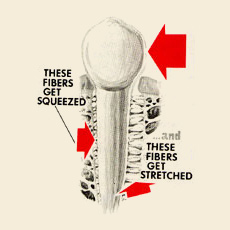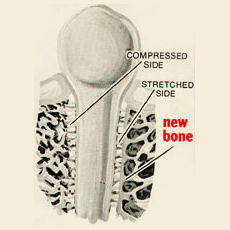Treatment
What is Orthodontics?
Orthodontics will align teeth so that they may be more easily maintained. Crowding creates periodontal (gum) problems which leads to bone and tooth loss. Improperly fitting teeth will create enamel wear which can be very destructive. Bite problems, where teeth do not fit together ideally, can trigger muscle and joint discomfort - also known as TMJ dysfunction.
Early diagnosis and treatment of orthodontic problems is often less expensive and less complicated since more serious problems may develop beyond the age of 16 or 17. We recommend that children see an orthodontist by age 7 or 8.

If we could look at a tooth straight through the bone in your mouth.

And if you could look through the tooth itself.

With pressure from your braces your tooth starts to move.

So again looking through your tooth.

Nature helps the tooth to loosen to relieve the pressure but there is temporary discomfort while this happens. Gradually the bone makes room on the compressed side and new bone grows in to support the stretched side, so the supported tooth becomes comfortable again.
But we can't stop there! So on your next appointment the process is repeated. However, once your tooth has loosened from this first movement, each new adjustment is easier and little or no discomfort follows.
Once your teeth have been placed where we want them your retainer holds them in their new position allowing the boney support to return to a normal and stable condition.
So tooth movement is really a normal physiological process that allows your orthodontic correction to occur.

